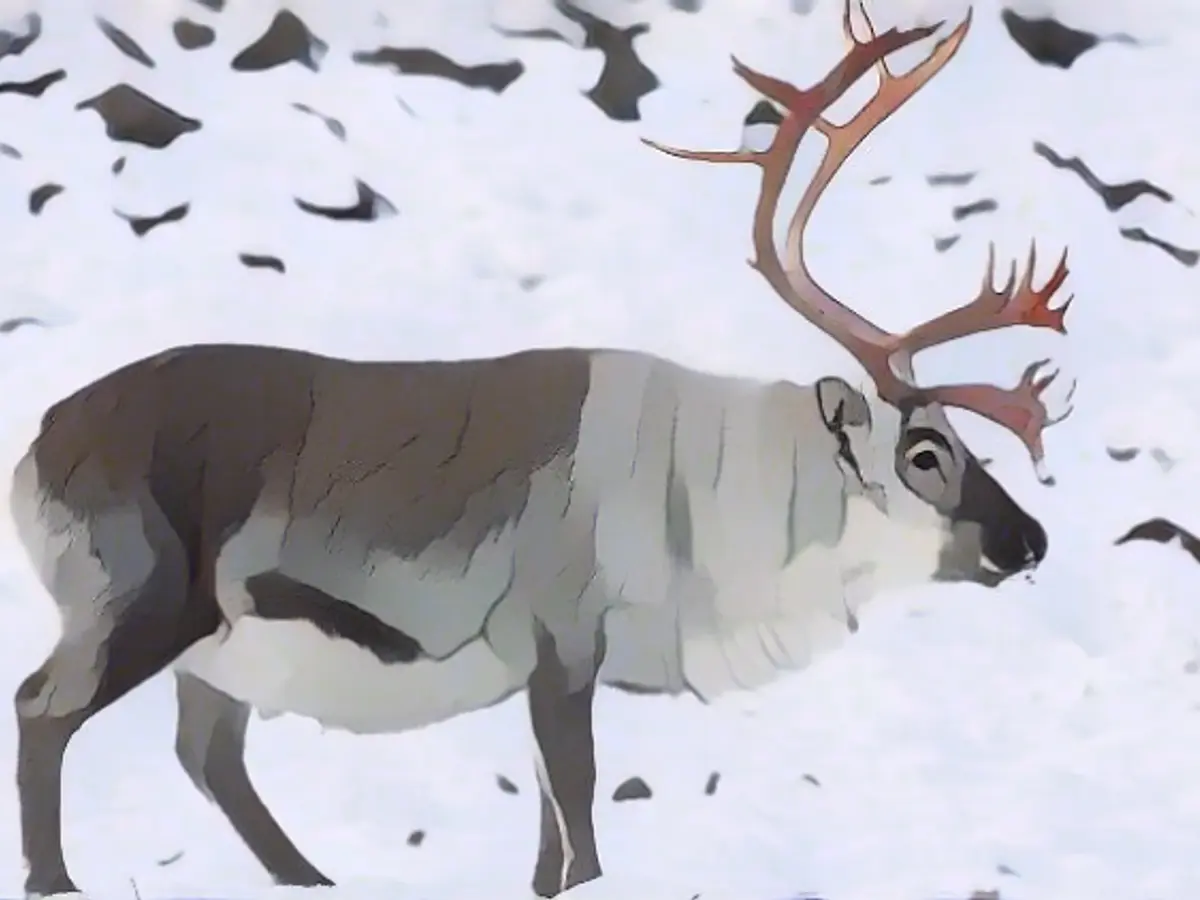Reindeer break into the ice and can hardly find any food
Warmer temperatures are causing major problems for reindeer in the tundra and taiga. Less permafrost means thinner ice. The animals are collapsing and finding less and less food in their natural environment. Breeders are therefore resorting to unusual measures.
The climate crisis is causing problems for the reindeer kept by breeders in northern Norway. As the Norwegian University of Science and Technology (NTNU) in Trondheim recently announced, there is a threat of problems with young animals. According to Anna-Laila Danielsen, who wrote her master's thesis on the problem, it is often no longer cold enough for lakes and rivers to freeze over and for the reindeer to walk across the ice on their way to their winter grazing grounds. This interrupts the migration routes.
Reindeer live in the tundra and taiga of the northern polar regions. They are the only domesticated deer species. Breeders also reported to Danielsen that a light layer of snow often covers the still thin ice. The animals are then often unable to recognize that the ice is not yet bearing weight. They can then collapse when walking over it. Some breeders therefore want to build bridges for the reindeer.
In addition, there is now less permafrost and winter temperatures fluctuate around freezing point more frequently than in the past. As a result, several thin layers of ice can form on the snow, which together are so hard that the reindeer can no longer reach the food under the ice, writes Danielsen. The herders therefore have to bring in additional food, which is expensive and time-consuming, especially as vehicles with hay and pellets cannot get everywhere in the wilderness.
There is also often crowding among the reindeer when they are fed. Dominant animals keep other animals away from the food. This is not a problem in the wild, where the weaker ones look for another place to graze. This is not possible at an artificial feeding site. Some breeders have now developed special feeding devices.
Read also:
- Snow chaos further restricts Bavaria
- Unanimous decision: faster wolf culls possible
- The year of climate records: extreme is the new normal
- Snow and ice paralyze southern Germany
The international community is increasingly recognizing the impact of climate change on reindeer populations, with Norway being one of the countries most affected. The warmer climate and reduced permafrost are causing significant challenges for reindeer breeders, affecting both migration routes and food availability.
Given the seriousness of the situation, some Norwegian breeders are exploring innovative solutions, such as constructing bridges for the reindeer to cross thin ice safely and implementing specialized feeding devices to prevent crowding and ensure food distribution.
Source: www.ntv.de






